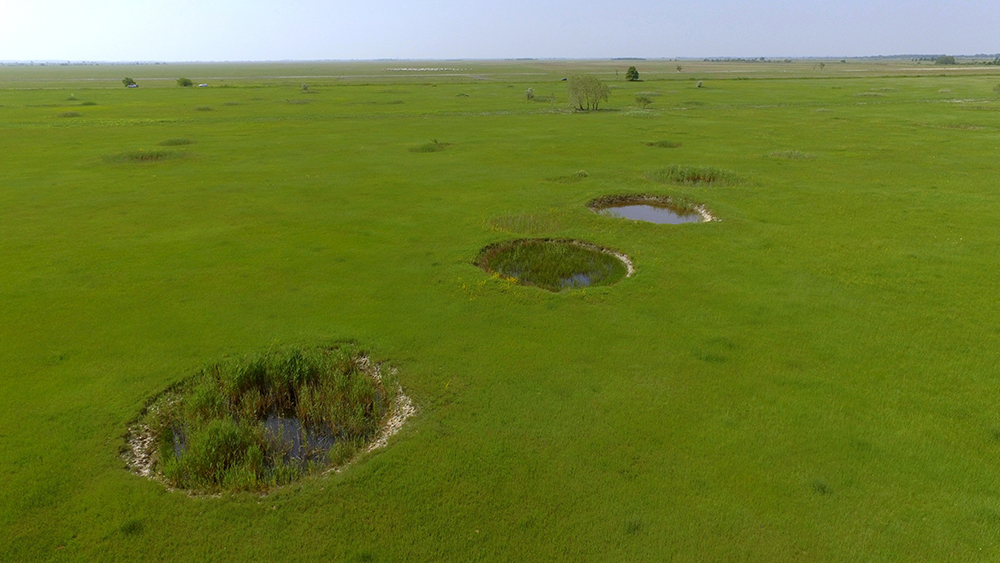
JUICE, the spacecraft was launched in April 2023 towards Jupiter.Continue reading

A study led by HUN-REN CER (Center for Ecological Research) researchers on a bomb crater pond network demonstrates the importance of connectivity for aquatic biodiversity.
The Biodiversity and Metacommunity Ecology Research Group of the HUN-REN Centre for Ecological Research (HUN-REN CER) has investigated the relationship between species diversity in small ponds that formed in former bomb craters in Hungary’s Kiskunság region and the spatial distribution of these ponds.
The research sheds light on the importance of the placement and distances between these small ponds within the habitat network they create and the impact of these factors on the biodiversity of the ponds.
Habitat fragmentation poses a growing global threat to our natural ecosystems, making it one of the greatest challenges in biodiversity conservation. Among the most vulnerable ecosystems are ponds, due to their small sizes and intricate networks. Once a pond loses its neighbor, it becomes isolated. This isolation can lead to a decline in biodiversity.
Situated in the heart of the Pannonian Plain on the interfluve of the Danube and Tisza rivers, Hungary’s Kiskunság region is a diverse landscape, encompassing a variety of aquatic and terrestrial habitats. Here, a cluster of 112 bomb crater ponds form a network with ponds differing in their distances, and therefore their relative connectivity to their neighbors. This so-called ‘pondscape’ was likely created during World War II by mistargeted bombing on a sodic meadow. Since the ponds are small and easy to sample and form a well-delineated network far from other waterbodies, they represent an excellent model system to understand how pond networks sustain biodiversity, and form a meta-community.
The ponds hold sodic water mostly dominated by sodium carbonates and hydro-carbonates, and vary in environmental and morphological characteristics.
The ponds host a variety of species, including Pannonian endemic fairy shrimp (Chirocephalus carnuntanus), protected amphibians, pond turtles, and a range of invertebrates such as dragonflies, mayflies, aquatic beetles, and microcrustaceans.
Fairy shrimp. Photo: Wikipedia
“The findings showed that besides environmental conditions which certainly play a significant role in shaping community composition, the spatial position of ponds in the network is also important, particularly for passively dispersing organism groups. These are the organisms (e.g. microbes, plankton) that rely on dispersal agents, such as wind to move them across the landscape. For these species, it is better to be in the center of the network where their pond is surrounded by many other ponds, from which conspecifics can easily arrive. This leads to higher diversity of these groups in the center of the pondscape,” explains Barbara Barta, the lead author of the study.
These results underscore the significance of studying and conserving ponds as integral components of an interconnected network of habitats, rather than as isolated entities,”
the researcher concluded.
Via HUN-REN CER; Featured Image: Horváth Zsófia